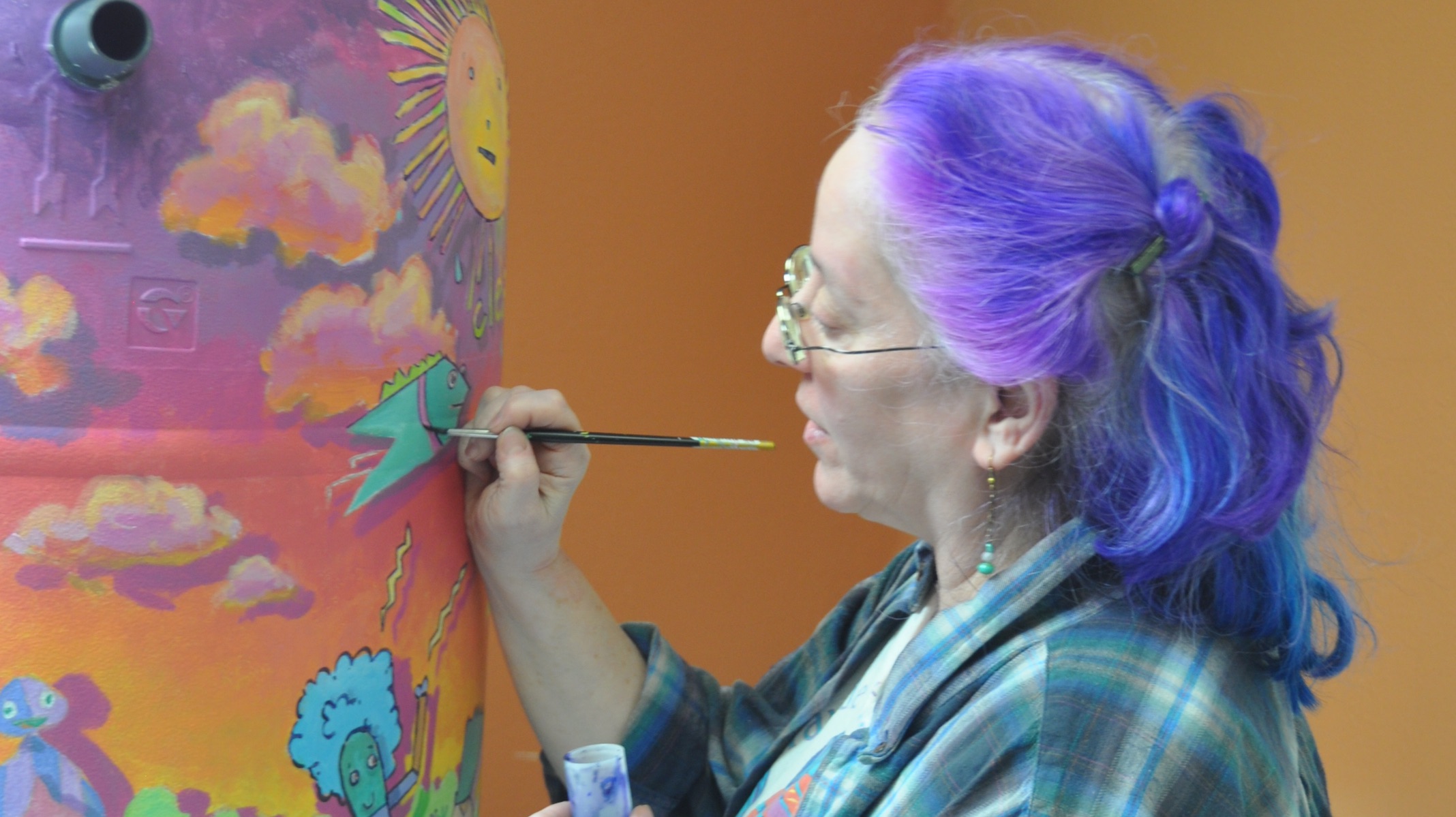Asset Publisher
Creative Arts Programming for Older Adults
By Ashlee Cordell | 09/15/2021

An older adult creating colorful artwork
Finding meaningful ways to engage with an older loved one can be a challenge, especially during the pandemic. For those looking for an activity to do together with a loved one—whether indoors or outdoors—creative arts may be a good place to start! Helping a loved one get in touch with their creative side can offer many benefits and may be easier to do than we think.
As we age, we grow in knowledge and expertise, which are two key components of creativity. Creativity is an important part of everyday life and has become even more important during pandemic times with increases in social isolation and loneliness. Fortunately, creative arts programming can help address issues of isolation, loneliness and so much more.
Participation in creative arts programming can offer numerous physical, mental and social benefits for the older loved one we provide care for, including:
- Improved mood: Creative arts can reduce feelings of anxiety, depression and loneliness among older adults, and have a loved one feeling more positive overall.
- Sharper mind: Creative arts provide mental stimulation and sparks connections in the brain that ultimately lead to sharper senses. A Mayo Clinic study has shown that participating in the arts may also lower the risk of dementia.
- Enhanced mobility: Creative arts facilitate various movements that can improve things like hand-eye coordination and blood flow throughout the body.
- Increased social ties: Creative arts provide opportunities for meeting new people and building new relationships, both of which support positive mental health.
- Greater self-expression: Creative arts allow older adults to express themselves in a non-verbal manner. This alternative form of communication can help a loved one express their thoughts and feelings in a new way.
These benefits, in turn, may improve a loved ones’ overall health and well-being. Furthermore, these benefits are experienced both by older adults participating in professional-lead programming such as art therapy sessions, as well as those who do art on their own, as a hobby. The good news is a loved one does not have to have any art background or training to reap the benefits either!
Whether a loved one lives in the community or a long-term care setting, there are many different creative arts programs that can be explored:
- Dance/Theater: Watching and creating plays/movies together is a great way to prompt conversation and spark creativity. In addition, dancing is a fun way to get active!
- Music: Everybody enjoys music, no matter our age! We can try listening to some of our favorite artists/songs together or creating a playlist to share.
- Poetry/Storytelling: Whether we or a loved one enjoy reading poetry and stories from our favorite authors, or want to write our own, words have the magical ability to take us away from reality for a bit.
- Making visual art: This can include art forms such as ceramics, collaging, drawing, film making, painting, photography, printmaking, sculpture—the list goes on. These art forms can be created independently, in groups or virtually over video chat.
- Viewing visual art: Going to an art museum is a favorite pastime held by many. Many museums today also offer virtual tours, so we can explore pieces of art from all over the world without ever leaving our homes!
For more information on the social impact of art, visit the Arts + Social Impacts Explorer Tool on the Americans for the Arts website. The interactive tool includes downloadable fact sheets to make the great impact of the arts more visible to all. For additional behavioral health and social support services, use the Eldercare Locator to find what is available in your area.
Related Assets
Suggested Reads
Creative Activities Older Adults Can Do from the Comfort of Home
The ability to be creative and express oneself is something that is not limited by age. Even if we’ve never participated in the arts previously, it’s never too late to learn! The benefits of creative aging do not always depend on our ability and skill level, b...
Creative Therapies for Loved Ones with Dementia
While dementia does not yet have a cure, there are ways to treat and soothe a person with dementia’s symptoms and make their potential anxiety, stress, moods and challenging behavior easier to manage. If you’re a caregiver for a loved one with dementia, the cr...
